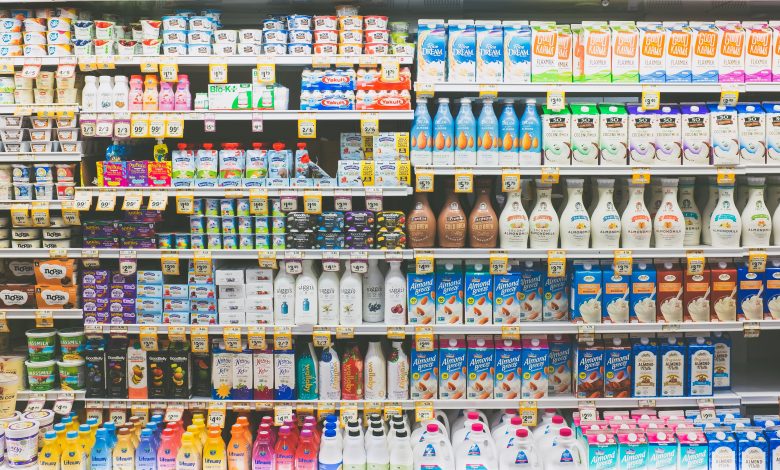
Why Full-Fat Foods Are Better for Weight Loss Than Low-Fat Foods
Most of us are now accepting the idea of “healthy” fats. You probably cook with olive oil or coconut oil, use avocado as a sandwich filling, and do all you can to snack on healthy nuts like almonds. But there is one food item that many of us are skeptical about – dairy. When faced with dozens of milk cartons in a shopping center, you feel more comfortable with the low-fat milk. This deep prejudice against anything that says full-fat stems from a long time notion that milk makes you fat.
Is low-fat food better than full-fat foods? Which of the two should you opt for to help you lose weight? We’ll debunk some myths and shed light on the ‘low -fat’ craze.
Why Full-Fat is Better
Contribute to Heart Health
This is something that many will find shocking. After all, how many times have you heard that eating cheese is terrible for the heart? According to research published by The American Journal of Clinical Nutrition, eating full-fat cheese increased the HDL, or ‘good’ cholesterol, levels. An increase in this good cholesterol is associated with a lowered risk of heart disease.
Further, the same study clarified that eating fat from cheese, yogurt, and milk did not contribute to the development of coronary artery disease. The reason for the unexpected benefits of full-fat dairy products is possible because of the unique fatty acids contained in whole fat dairy.
Another 22-year study evaluated the connection between dairy-related fatty acids and heart disease. Over 2,000 elderly adults were involved in the study, which started in 1992. The deaths from heart disease during the time of the study were 833, but these deaths were not because of high dairy consumption. Those who consumed high levels of dairy-related fatty acids had a lower risk of dying from heart disease.
Lower Sugar Intake
The idea that you should stay away from full-fat dairy products can easily backfire. When you reduce the amount of fat you eat, your body gets the calories you need from other sources like carbs and sugar. So you saved your body from the fat of dairy products but instead ate more sugar and carbs, which isn’t good strategy for weight loss.
If you have learned that full-fat dairy products are harmful, think again. The truth is low-fat products often contain much more sugar to make up for the fat removed. For example, four ounces of low-fat yogurt has four teaspoons of sugar plus 96 calories. Compare that to the one teaspoon of natural milk sugar with only 69 calories in full-fat, plain yogurt.
If you are cutting back on your sugar intake (which you should), choosing the low-fat option is the worst decision you can make. Full-fat foods have a more moderate sugar content and, therefore, are the better choice.
Promote Good Digestive Health
Bloating is one of the many challenges faced by those trying to lose weight. Since gas produced by the bacteria in the intestine is one of the major causes of the condition, probiotics can help reduce this production. Whole milk and yogurt are also lower in lactose, which makes it easier to digest if you are lactose intolerant.
Another benefit of full-fat foods on digestive health is its ability to treat irritable bowel syndrome. According to one review published in 2013, the butyric acid found in dairy products can supply bowels with cellular energy and promote healthy gut bacteria.
May Lower Your Risk of Diabetes
We all know that the key to reducing your risk of diabetes is maintaining a healthy weight. However, research shows that eating full-fat dairy products can also help. One 15 year study analyzed the blood of more than 3,000 middle-aged participants. The researchers found that those with higher levels of dairy fat had a 46 percent lowered risk of diabetes than those who consumed low-fat foods.
The fat in full-fat dairy lowers the absorption of the kinds of milk sugar. This means that the low-fat versions of dairy products have lower fat and, in turn, cause the body to absorb high amounts of milk sugar. This means your blood sugar rises slower over long periods, which lowers the risk of insulin resistance.

Favorite Low-Fat Foods That Are Bad for You
Now that we have cleared the air about the health benefits of full-fat dairy products, you may wonder: Just how bad are low-fat foods? After all, they do have a lowered fat content, which means lower calories, so they must have something useful to offer, right? Well, here is a list of some of the most common low-fat foods you may have in your pantry. Read on and decide for yourself whether they are worth the risk.
Low-Fat Peanut Butter
Peanut butter has many health benefits, from increasing satiety to controlling appetite and lowering blood sugar. These benefits are all because of the monounsaturated fat, such as oleic acid. Natural peanut butter often contains peanuts and some salt. On the other hand, low-fat peanut butter has additional ingredients that can backfire on your weight loss plans.
Low-fat peanut butter often adds sugar and high-fructose corn syrup to make up for the fat removed. Another replacement is processed vegetable oil, which we all know is full of trans fats and something you never want to touch. So although you will have four grams less fat, you will be left with a product that is very unhealthy.
Low-Fat Coffee Drinks
There is no arguing that pure coffee is one of the healthiest beverages that can do wonders for weight loss. Not only is it rich in antioxidants, but it also promotes better heart health and even reduces the risk of type 2 diabetes. The caffeine in coffee can also improve mental and physical performance while enhancing metabolic rate.
Flavored low-fat coffee is a different story. Let’s take as an example a 16-ounce low-fat mocha drink that has two grams of fat. At first glance, you may assume you are making an excellent choice with only two grams of fat. But take a closer look, and you’ll see that the drink has 33 grams of refined sugar. On top of that, sugar is a liquid form of fructose, which we all know is never a good idea.
Low-Fat Sweetened Cereal
Cereals are low in fat, have vitamins and minerals, and some contain whole grains. However, most cereals are full of sugar. If you take the time to read the ingredients on the box, you’ll find sugar listed high up, which means it is present in high amounts. And it only gets worse.
One study conducted by the Environmental Working Group discovered that, on average, a box of breakfast cereal has up to 25 percent sugar by weight. What’s more, the sugar it contains is all the ‘bad stuff,’ from high-fructose corn syrup to fructose and brown sugar.
Low-Fat Muffins
Like other low-fat options, low-fat muffins sound like a healthier choice, but they aren’t. For example, a low-fat blueberry muffin contains at least 19 grams of sugar, which make up 42 percent of its caloric content. And that’s just a tiny muffin. Commercial muffins can be up to 300 percent larger, so you can do the math and find out just how much sugar that large muffin has.
Another reason low-fat muffins are sneakily bad has to do with their low fiber content and high glycemic index. Unlike bran muffins that have high fiber content, low-fat muffins raise sugar levels quickly, which does no good for your weight loss. Foods with a high glycemic index cause over-eating and, ultimately, weight gain.
Low-Fat Cereal Bars
All you have to do is grab a bar on your way out the door, and you have a healthy snack when you get hungry. Or so you think. In reality, low-fat cereal bars offer very little nutritional value. Not only do they have shallow protein content (about 2 grams), but they are also high in sugar (13 grams). The reason why you feel energized after eating a cereal bar isn’t that you are full but because you are on a sugar high.
Low-Fat Cookies
This is yet another low-fat food that many believe will do them good but leads to more weight gain. Let’s take a seemingly healthy choice – oatmeal raisin cookies that claim to be fat-free. This cookie has a whopping 15 grams of sugar, which is more than half of its calorie content. On top of this, most ‘healthy’ cookies use refined flour, which we all know is unhealthy.
Low-Fat Salad Dressing
Here is another low-fat food that many easily incorporate in their diet without a second thought. An ideal salad dressing should not only enhance the flavor of the vegetables, but also add to the nutritional value. Or if it can’t add to it’s worth, it should at least not turn a healthy dish into an unhealthy one. The right salad dressing is high in fat, which helps your body absorb vitamins A, D, E, and K.
Low-fat salad dressings do not meet the criteria for a healthy salad dressing. Your favorite Thousand Island dressing might taste good, but it has tons of sugar and preservatives. Even the fat-free Italian dressing is full of sugar.
Instead of taking the easy way out and grabbing the first ‘fat-free’ dressing that catches your eye, why not make a healthier option? All you’ll need is some olive oil, apple cider vinegar, and a few spices to create a dressing that is both tasty and healthy.
The Best Full-Fat Dairy Products

Whole Milk
Although full-fat dairy milk does have more calories, it is also more filling, which means you are likely to eat less for the rest of the day if you start with a glass of milk. One study found that those who eat full-fat dairy are less likely to suffer from obesity compared to whose to stick to low-fat dairy. As we have also discussed, there is no evidence linking whole milk with diabetes or heart issues.
Regular Mayonnaise
Mayonnaise is made mostly from egg yolks, so you can expect it to contain high fat, but as you also know, eggs are one of the most nutritious foods on the planet. Compared to the so-called low-fat mayo, real mayo is the healthier choice. The low-fat versions contain vegetable oils, sugars, and preservatives, which decrease its nutritional value. On top of that, the low-fat content of low-fat mayo hinders the body’s ability to absorb fat-soluble vitamins, which can lead to cravings and heart issues.
Natural Peanut Butter
It’s true that low-fat peanut butter may have less fat, but as we have mentioned, it will make up for this loss by adding more sugar and salt. Natural peanut butter, on the other hand, is more healthy and contains monounsaturated fats, which are the ‘good’ fat. In other words, opting for a reduced-fat version of peanut butter is exchanging healthy fats for sugars and trans fats.
Full Fat Yogurt
Yogurt is one of the best foods you can eat to promote weight loss, but this depends on the type of yogurt you choose. Full-fat yogurt has more protein and less sugar compared to its low-fat version. So if you’ve been suffering from the bland taste of low-fat yogurt, it’s time to make a healthier, tastier change.
Heavy Cream for Coffee
Heavy cream may not sound like a weight-loss food, but it is far better than low-fat cream. Heavy cream has healthy fat that can help maintain sugar levels between meals while providing constant energy. Adding it to coffee may also reduce the adverse side effects like jitters while adding to its creamy texture. Other options like skim milk have the opposite effect and can stimulate insulin production and promote weight gain.
Busting the Low-Fat Dairy Myth
If you were relieved to learn about the benefits of full-fat dairy foods, you should be. Unlike popular belief, full-fat foods are far healthier than low-fat foods and can even aid with weight loss. Not only do they enhance satiety, but full-fat dairy is also rich in vitamins and minerals. On the other hand, low-fat dairy products often substitute fat for sugar and other preservatives. This substitution may lower the fat content of the product, but it also increases its sugar content. Given a choice. always choose higher fat over higher sugar. Give your refrigerator and pantry a proper clean-up, get rid of all low-fat diets, and bring back full-fat dairy products into your life.



